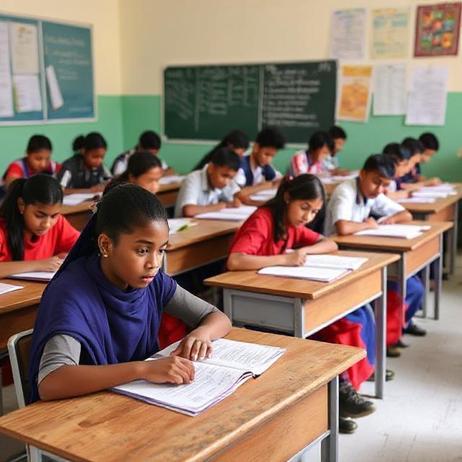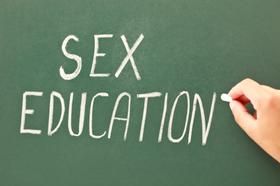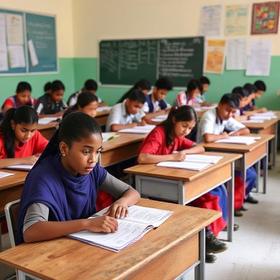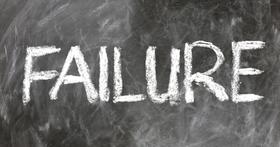The Debate Over Standardized Curriculum (2025 Update)
Introduction
In the United States, the conversation around a standardized curriculum continues to shape policy, school practice and parent expectations. Whether defined broadly as a common set of expectations for what all students in a given grade should learn, or more narrowly as state‐mandated frameworks aligned with assessments, the notion of standardized curriculum remains central in debates over equity, quality and innovation in K-12 education. This article revisits that debate with the latest data, policy shifts and real‐world examples through 2025.
What We Mean by “Standardized Curriculum”
A standardized curriculum typically refers to a clearly defined set of learning goals, content specifications and instructional expectations applied across multiple schools or districts—often with alignment to standardized assessments. The aim is to ensure all students, regardless of school or location, receive equivalent opportunities to learn core knowledge and skills.
Proponents argue it brings consistency, transferability (when students change schools), transparency for parents and alignment with college‐ and career-readiness goals. Meanwhile, critics caution that one size may restrict teacher autonomy, undermine local context, and incentivize “teaching to the test” at the expense of deeper learning.
In 2025, the tension between standardization and flexibility remains acute, but the landscape is shifting in response to student performance data, pandemic disruptions and new policy directions.
Current Policy and Student Performance Trends (2025)
Student Achievement
Recent results from the National Assessment of Educational Progress (NAEP, known as “The Nation’s Report Card”) underscore the urgency of the debate. In the 2024 assessment:
Just 31 % of eighth‐grade students scored at or above the “Proficient” level in science—marking a decline and the largest achievement gap on record. nagb.gov
For 12th‐grade students, only 22 % scored at or above Proficient in mathematics, and 35 % in reading, both declining since 2019.
Reading scores for 4th and 8th graders fell by about two points in the 2024 cycle—even with increased federal tutoring and relief funding.
These findings reinforce the stakes: if a standardized curriculum is meant to promote equitable opportunity and robust outcomes, the data suggest significant work remains.
Curriculum & Policy Trends
In policy terms, several important dynamics are in play:
States continue to adopt or revise curricula frameworks in K-12. From 2022–2025, according to Ballotpedia, major trends include reading legislation grounded in the “science of reading,” parental access to curricular content, and debates over how social studies and other subjects are taught.
Under the Every Student Succeeds Act (ESSA) framework, states are required to have “challenging academic standards” and aligned assessments.
At the same time, governors and state education leaders in 2025 emphasise modernising curricula, addressing chronic absenteeism and extending tutoring and summer programming. FutureEd
Tuition, Demographics & Equity Considerations
Although tuition applies primarily to private and boarding schools rather than public K-12 standardized curricula, relevant demographic shifts matter: public‐school student populations are increasingly diverse in race/ethnicity and language status, prompting more attention to how standardized curricular frameworks serve multilingual learners and students with disabilities.
Education equity advocates emphasize that standardized curriculum must not merely be equal, but equitable—i.e., tailored so that historically underserved students gain access to the same rigorous, relevant content. Critics warn that test‐aligned standardized curricula may neglect curiosity, inquiry or deeper disciplinary thinking.
Advantages of a Standardized Curriculum (2025 View)
Greater clarity and transparency: For parents and students, having a known set of learning goals helps understand what “should” be taught and what mastery means. The Fordham Institute emphasises that tests and standards provide a necessary signal when children are off track.
Facilitates mobility and transferability: When students move between districts or schools, standardized curriculum supports continuity in what they are learning—minimising gaps due to local variance.
Promotes accountability and resource alignment: A common framework allows schools to benchmark performance, identify gaps and allocate resources accordingly (e.g., remediation, acceleration).
Supports equity goals: If well‐designed, a consistent curriculum can raise expectations for all students and reduce location‐based inequities. The ProCon summary of standardized tests notes that “we cannot fix what we cannot measure.”
Challenges and Criticisms (2025 View)
Overemphasis on assessment and narrowing of instruction: Critics argue standardized curriculum often becomes shorthand for “test preparation,” limiting opportunity for real inquiry, creativity, collaboration and problem‐solving.
Insufficient flexibility for local context and student diversity: A one-size framework may struggle to meet needs of multilingual learners, special education students or culturally specific contexts. 2024 NAEP data show lowest-performing students falling further behind.
Rising achievement gaps despite standardization: The widening distance between highest and lowest performers suggests curriculum alone is not sufficient; instruction, support and context matter. csba.org
Implementation burdens and teacher professional learning: Rolling out a standardized curriculum demands training, materials, assessment alignment and monitoring. Without adequate support, the risk is superficial adoption or unintended consequences.
2025 Real-World Examples and Insights
Example 1: Reading reform grounded in the “science of reading”
Several states have updated or are in the process of revising literacy curricula to reflect evidence-based practices known as the science of reading. For example, some states require districts to adopt phonics‐centered curricula, provide professional learning and monitor district compliance. The standardized curriculum debate here involves both what is taught (reading foundational skills) and how it is taught (explicit instruction).
Example 2: Curriculum flexibility amid pandemic recovery
In 2025 many districts have begun to allow greater flexibility around pacing, enrichment and hybrid instructional models as part of post-COVID recovery. Some advocate for a “balanced standardized curriculum” that sets core expectations but permits accelerated, enrichment or remediation pathways to accommodate diverse student needs.
Expert Insight
Dr Marisol Garcia, professor of curriculum studies at a major university, observes:
“In 2025 it’s no longer enough to adopt a standard-set curriculum; we must ensure the instructional ecosystem—teacher supports, materials, assessment alignment and student engagement—is built around that curriculum. Otherwise, standardisation becomes a static blueprint, not a dynamic engine of learning.”
Similarly, Jessica Turner, a district superintendent in a large urban district, remarks:
“We use a common curriculum to anchor our efforts, but we personalise within it. The key is professional learning for teachers and built-in time to adapt to student needs—not simply following a pacing guide.”
Implications for Parents, Students and Educators
For parents: Ask questions about how your child’s school implements the standardized curriculum: Is there a clear scope and sequence? How are teachers trained? Transparency around core learning goals helps you support your child.
For students: Familiarity with the scope of what is expected helps you focus your efforts—knowing the “big ideas” of a grade-level curriculum enables purposeful preparation.
For educators and administrators: Success depends less on whether a standardized curriculum is adopted than how it is implemented. Key levers include professional development, formative assessment data, differentiated instruction, and maintaining opportunities for creativity and student agency within the structure.
For those exploring private or boarding schools, a resource such as BoardingSchoolReview provides detailed profiles—many independent schools use standardized curricular frameworks, but also often emphasise enrichment, individualized pacing and personalized pathways.
Looking Ahead: The Path Forward
In 2025 the debate over standardized curriculum remains unresolved but is evolving. Key areas to watch include:
Enhanced pedagogical flexibility: Schools are increasingly seeking curricular frameworks that allow core alignment and embedded opportunities for innovation, inquiry and differentiated pathways.
Data‐informed revision cycles: As NAEP and state assessment results continue to provide sobering signals, curricula will likely be revised more frequently to respond to gaps and shifts in knowledge demands.
Focus on equity and access: Ensuring that standardized curricula serve historically underserved populations requires investment in supports, culturally responsive materials and differentiated instruction.
Integration of future-ready content: As demands on students evolve (e.g., AI literacy, global citizenship, climate science), curriculum standardisation must anticipate—rather than lag behind—emerging skills and literacies.
Shift from high‐stakes to meaningful assessment: Some policymakers have already begun reducing the stakes attached to standardized assessments or rethinking graduation requirements. For example, in one state voters removed the requirement to pass high-stakes tests to earn a diploma. AP News
Conclusion
The dispute over standardized curriculum is not about “standardisation or nothing,” but rather about how to design and implement frameworks that are rigorous and equitable, yet flexible and responsive. With the most recent data showing declining proficiency levels and widening gaps, the urgency is clear. For parents, students and educators alike, the focus must shift from whether a standardised curriculum exists to how it works in practice—supported by quality instruction, ongoing professional learning and meaningful student engagement. In an era of rapid change, a high-quality standardized curriculum remains a foundational piece—but it cannot stand alone.















